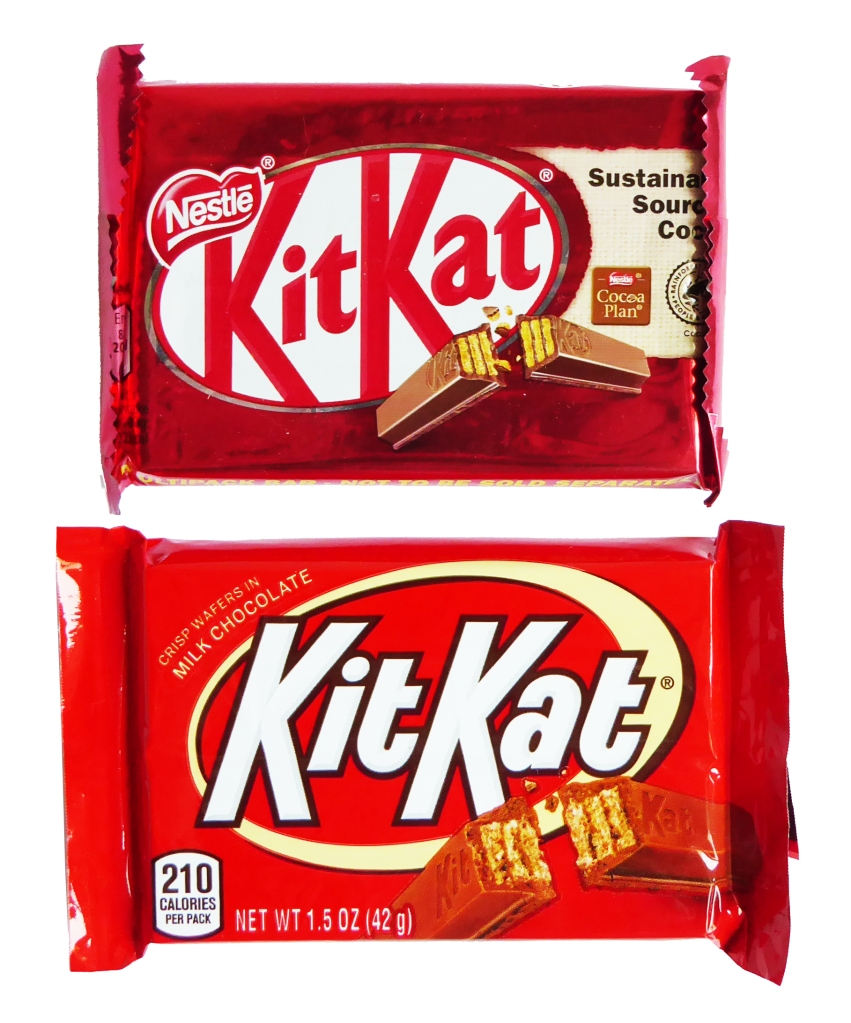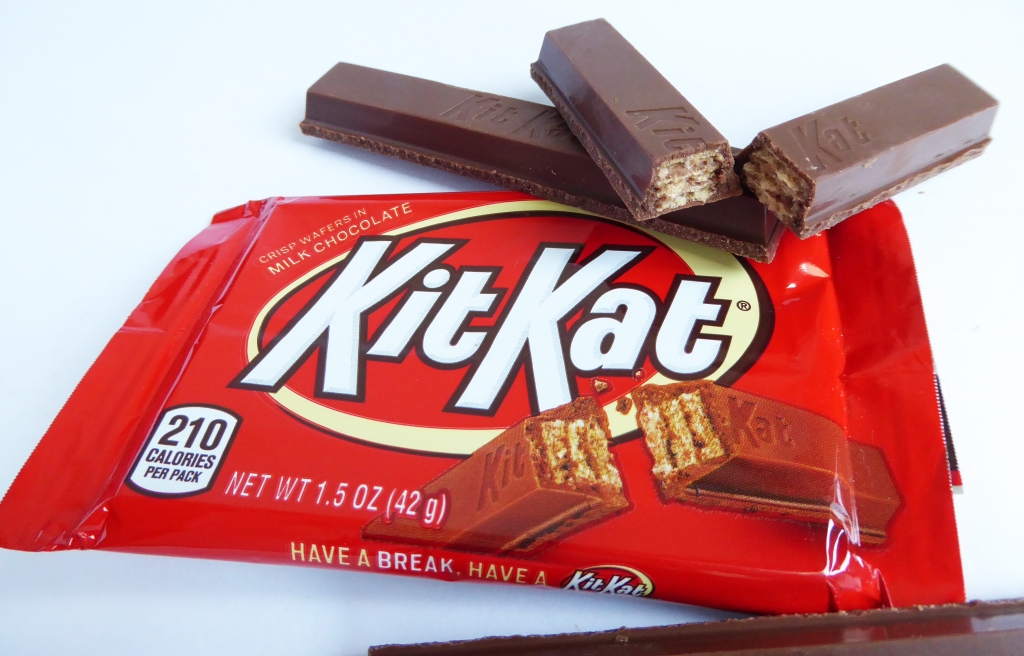The ‘Kit Kat’ is somewhat of a global superstar; created in York, England in the 1930’s it has since developed into a cultural and flavour sensation in Japan, expanded its range to include exotic ingredients, has numerous countlines branded to seasons, themes and events, has grown up into large 10-finger bars and chunky formats, has a dedicated ‘Chocolatory‘ where customers can create their own custom Kit Kats, and is currently enjoyed in over 80 countries.
This humble, yet exceedingly tasty, layered chocolate wafer has a following all of its own in the confectionery world with many fans avidly trying as many flavours, varieties and forms from around the world and soley collecting Kit Kat wrappers and memorbilla.
Now most of the Kit Kats I have tried have come from the its original home, the UK, as well as the USA, Australia and a selection of miniatures from Japan – but this week I have two ‘Dessert Delight’ Kit Kats from India to sample!

‘Divine Choco Pudding‘ and ‘Heavenly Brownie Kubes’ come in these rather smart embossed, cardboard boxes and are made in the four-finger format with four snapable portions on each finger. Despite having endured a bit of an arduous journey to get here (note the slight melting and bloom) they are perfectly edible…and tasty!

‘Divine Choco Pudding‘ is described as a ‘cream caramel flavoured dessert inspiration’ and includes a caramel flavoured milk chocolate along with the signature crispy layers. It is very sweet, pretty much like caramel and with notes of honey. Perhaps a little too sweet to eat all four fingers in one go, however the milk chocolate is milky and rich and makes for a tasty (sharing) break.
Made with ‘luscious‘ dark chocolate the ‘Heavenly Brownie Kubes‘ is essentially just a dark Kit Kat. Despite the packaging and themes being centred around classic desserts, there isn’t anything to separate this bar with a typical dark chocolate Kit Kat wafer. I was somewhat hoping for a thick, sickly, fudgy type chocolate or chocolate cream to make this break even more ‘heavenly’ and indulgent, but, it’s not to be found here.
That being said, the plain chocolate is nice, but very dry…although this could be down to the bloom.
I’d certainly like to try more global Kit Kat varieties in the future – does anyone out there have any recommendation for me? Which country does the Kit Kat best?





